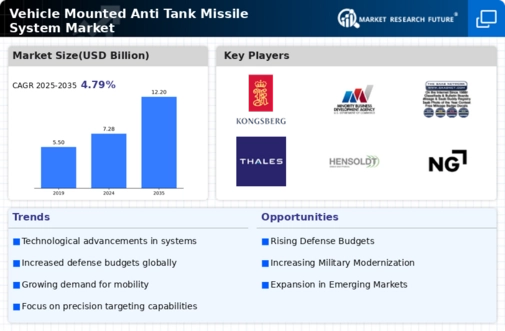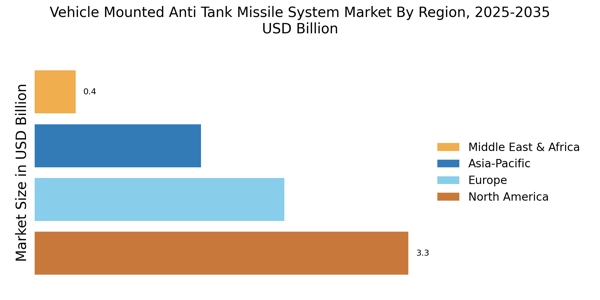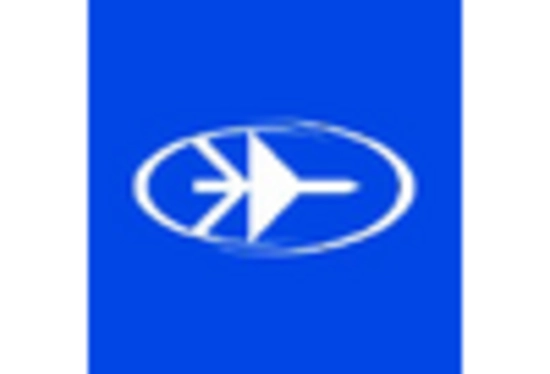The Vehicle Mounted Anti Tank Missile System Market is currently characterized by a dynamic competitive landscape, driven by technological advancements and increasing defense budgets across various nations. Key players such as Lockheed Martin (US), Raytheon (US), and Rafael Advanced Defense Systems (IL) are at the forefront, each adopting distinct strategies to enhance their market positioning. Lockheed Martin (US) emphasizes innovation through the development of next-generation missile systems, while Raytheon (US) focuses on strategic partnerships to bolster its technological capabilities. Rafael Advanced Defense Systems (IL) appears to be concentrating on regional expansion, particularly in Europe and Asia, thereby diversifying its market reach. Collectively, these strategies contribute to a competitive environment that is increasingly focused on technological superiority and strategic collaborations.
In terms of business tactics, companies are localizing manufacturing to reduce costs and enhance supply chain efficiency. This approach is particularly evident in the context of geopolitical tensions, where rapid response capabilities are paramount. The market structure is moderately fragmented, with several players vying for dominance, yet the influence of major companies remains substantial. Their collective actions shape market dynamics, as they engage in continuous innovation and strategic partnerships to maintain competitive advantages.
In August 2025, Lockheed Martin (US) announced a collaboration with a European defense contractor to develop a new anti-tank missile system tailored for urban warfare scenarios. This strategic move is significant as it not only enhances Lockheed's product offerings but also positions the company to meet the evolving demands of modern warfare, particularly in densely populated environments. Such collaborations may also facilitate knowledge transfer and technological advancements, further solidifying Lockheed's market presence.
In September 2025, Raytheon (US) unveiled a new missile guidance system that integrates artificial intelligence to improve targeting accuracy. This development is crucial as it reflects the growing trend towards AI integration in defense systems, potentially offering Raytheon a competitive edge in precision warfare. The incorporation of AI could lead to enhanced operational effectiveness, thereby attracting interest from various military clients seeking advanced capabilities.
In July 2025, Rafael Advanced Defense Systems (IL) secured a contract with a Southeast Asian nation for the supply of its advanced anti-tank missile systems. This contract not only underscores Rafael's commitment to expanding its footprint in emerging markets but also highlights the increasing demand for sophisticated defense solutions in regions facing security challenges. Such strategic contracts are likely to bolster Rafael's revenue streams and enhance its competitive positioning in the global market.
As of October 2025, the competitive trends in the Vehicle Mounted Anti Tank Missile System Market are increasingly defined by digitalization, sustainability, and the integration of advanced technologies. Strategic alliances are becoming more prevalent, as companies recognize the need to pool resources and expertise to navigate complex market demands. Looking ahead, competitive differentiation is expected to evolve, shifting from traditional price-based competition to a focus on innovation, technological advancements, and supply chain reliability. This transition may redefine how companies approach market entry and product development, emphasizing the importance of agility and responsiveness in a rapidly changing defense landscape.


















Leave a Comment